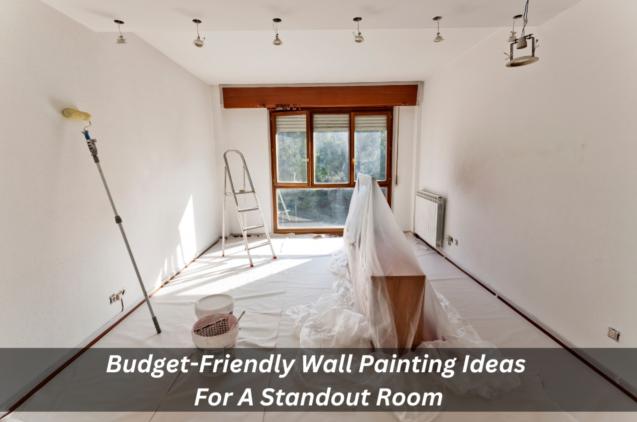
7 Reasons Why Plastering Is Better Than Drywall
By Mi Painting & Maintenance|November 09, 2022
You've probably heard both terms before, but what exactly do plastering and drywall mean? And why are they better or worse options for finishing walls?
Wall Plastering and drywall are two types of wall covering commonly used in homes. They are typically applied over wood studs. Plaster can cover uneven surfaces, such as brick veneers, smooth concrete floors, and stone and tile floors. Drywall, also known as sheetrock, is often preferred because it resists moisture, fire and humidity damage.
Both materials come pre-primed and ready to apply. However, some homeowners prefer plaster when choosing between these finishes because it requires fewer steps during installation.
Pros and Cons of each type of finish:
• Easy to install
• Can be installed on uneven surfaces
• Resists water and mould
Cons:
• Requires more time to complete the job and effort than drywall
• Less expensive than plaster
• Easier to work with
• Waterproof
Cons:
• Not ideal for all applications
Provided that the plaster or drywall is installed in a manner to avoid direct contact with the concrete, it will not cause damage. However, if you have any doubts about how your home painted was built, consult professional painters who know the best way to protect your property.
The cost of a paint job installing plaster and drywall varies depending on the size of the project. For example, a small bathroom may require only one coat of plaster while a large room may need three coats. The number of coats required depends on the thickness of the material being
Here are 7 reasons why plaster should always win out over drywall
1. Plaster is cheaper than drywall. There is no doubt that plastering costs significantly less than drywall. This makes it easier to save money for other projects.
2. Plaster is easier to install. Unlike drywall, plaster does not require special tools or skills. Installers can simply apply the plaster sheet by hand. Also, it takes less time to install than drywall because installation usually involves applying layers of thin cement sheets.
3. Plaster is stronger than drywall. Drywall is typically made up of two layers of paper sandwiched between two layers of gypsum. Because of this design, drywall is prone to cracking.
However, plaster is made up of three layers: gypsum, paper and another layer of gypsum. This gives plaster greater strength and durability.
4. Plaster is more durable than drywall. Drywalls tend to crack easily due to their weak construction. If cracks do occur, they will often grow larger over time.
On the other hand, plaster is designed to resist damage. Cracks rarely develop in plaster unless there is an extreme force exerted on the wall.
5. Plaster is more environmentally friendly than drywall. Drywall uses about 1 million gallons of water per year. That is enough to supply the needs of approximately 15 households. Plaster, however, only uses about 100 gallons of water per year, making it far more sustainable.
6. Plaster is more versatile than drywall. Drywalls are difficult in house painting projects. They must first be primed and then painted.
Plaster, on the other hand, can be painted right away. Additionally, plaster can be used to make custom shapes and designs.
7. Plaster is healthier than drywall. Dry-wall dust contains harmful chemicals that can cause respiratory problems. Plaster, on the other hand, has been proven to be safe for human consumption.
Improving the longevity and quality of life of its residents, plaster walls help reduce energy costs by offering better insulation than standard materials. They're also easy to remove and replace whenever needed, which is especially helpful during renovations.
Plaster can also offer a great aesthetic appeal, making it ideal for rooms like kitchens, bathrooms, bedroom houses, and living room spaces where you want something aesthetically pleasing but don't necessarily want to take down walls.
Wall Plastering and drywall are two types of wall covering commonly used in homes. They are typically applied over wood studs. Plaster can cover uneven surfaces, such as brick veneers, smooth concrete floors, and stone and tile floors. Drywall, also known as sheetrock, is often preferred because it resists moisture, fire and humidity damage.
Both materials come pre-primed and ready to apply. However, some homeowners prefer plaster when choosing between these finishes because it requires fewer steps during installation.
Pros and Cons of each type of finish:
- Plaster
• Easy to install
• Can be installed on uneven surfaces
• Resists water and mould
Cons:
• Requires more time to complete the job and effort than drywall
- Drywall
• Less expensive than plaster
• Easier to work with
• Waterproof
Cons:
• Not ideal for all applications
Provided that the plaster or drywall is installed in a manner to avoid direct contact with the concrete, it will not cause damage. However, if you have any doubts about how your home painted was built, consult professional painters who know the best way to protect your property.
The cost of a paint job installing plaster and drywall varies depending on the size of the project. For example, a small bathroom may require only one coat of plaster while a large room may need three coats. The number of coats required depends on the thickness of the material being
Here are 7 reasons why plaster should always win out over drywall
1. Plaster is cheaper than drywall. There is no doubt that plastering costs significantly less than drywall. This makes it easier to save money for other projects.
2. Plaster is easier to install. Unlike drywall, plaster does not require special tools or skills. Installers can simply apply the plaster sheet by hand. Also, it takes less time to install than drywall because installation usually involves applying layers of thin cement sheets.
3. Plaster is stronger than drywall. Drywall is typically made up of two layers of paper sandwiched between two layers of gypsum. Because of this design, drywall is prone to cracking.
However, plaster is made up of three layers: gypsum, paper and another layer of gypsum. This gives plaster greater strength and durability.
4. Plaster is more durable than drywall. Drywalls tend to crack easily due to their weak construction. If cracks do occur, they will often grow larger over time.
On the other hand, plaster is designed to resist damage. Cracks rarely develop in plaster unless there is an extreme force exerted on the wall.
5. Plaster is more environmentally friendly than drywall. Drywall uses about 1 million gallons of water per year. That is enough to supply the needs of approximately 15 households. Plaster, however, only uses about 100 gallons of water per year, making it far more sustainable.
6. Plaster is more versatile than drywall. Drywalls are difficult in house painting projects. They must first be primed and then painted.
Plaster, on the other hand, can be painted right away. Additionally, plaster can be used to make custom shapes and designs.
7. Plaster is healthier than drywall. Dry-wall dust contains harmful chemicals that can cause respiratory problems. Plaster, on the other hand, has been proven to be safe for human consumption.
Improving the longevity and quality of life of its residents, plaster walls help reduce energy costs by offering better insulation than standard materials. They're also easy to remove and replace whenever needed, which is especially helpful during renovations.
Plaster can also offer a great aesthetic appeal, making it ideal for rooms like kitchens, bathrooms, bedroom houses, and living room spaces where you want something aesthetically pleasing but don't necessarily want to take down walls.



